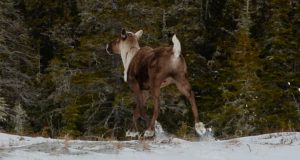Jun 18, 2018 @ 13:56
From coast to coast to coast, nature is at the heart of Canada’s national identity. Our rivers, mountains, lakes, and oceans—along with the wildlife species that depend on them—are a natural legacy for all Canadians to discover, enjoy, and preserve.
The Government of Canada has recently put in place new protections for 13 species at risk, in Canada, marking an important step in our commitment to protecting species and biodiversity in Canada. The regulation providing protection for these species, under the Species at Risk Act, was published in Part II of the Canada Gazette, on June 13, 2018.
The government has added 4 species of bees, including the yellow-banded bumble bee, to the list of protected species under the Species at Risk Act. The grizzly bear has also been listed, while the barn owl is now listed with a more severe level of risk, meaning additional protections will be put in place. Overall, 7 species were added to the list, and 6 species have been reclassified under the Act.
The Government of Canada is committed to enhancing the protection of Canada’s species at risk by responding quickly to the advice of scientists. Following the listing of plants, insects, and wildlife under the Species at Risk Act, the Government will prepare robust management plans or recovery strategies—working closely with provinces, territories, Indigenous communities, and stakeholders—and take additional steps as needed to protect at-risk species and work toward returning their populations to healthy and self-sustaining levels.
“The government of Canada is committed to protecting the health and diversity of Canada’splants, insects, and wildlife, for today and future generations. That’s why we’re responding quickly to the advice of scientists to protect bees, grizzlies, owls, and other vulnerable species under the Species at Risk Act and making historic investments to protect nature and put effective management or recovery plans in place.” – Catherine McKenna, Minister of Environment and Climate Change
Quick Facts
- The historic $1.3-billion investment in nature and conservation, announced in Budget 2018, will enable the protection of Canada’s natural places and the recovery and preservation of species at risk, in Canada.
- Bumble bees are an important species in Canada, which occupy a large geographical area and which are extremely important for pollination and food production.
- In addition to their intrinsic value, grizzly bears contribute to maintaining healthy ecosystems by transporting salmon carcasses as well as seeds into forests, which provides important nutrients to other plants and animals. They are also important for tourism, and they contribute to the ecological integrity of Western Canada’s national parks and protected areas.
- There are over 584 species protected under the Species at Risk Act.
Related Products
Associated Links
- Order Amending Schedule 1 to the Species at Risk Act
- Environment and Climate Change Canada’s Twitter page
- Environment and Natural Resources in Canada’s Facebook page
SOURCE: Environment and Climate Change Canada
- NDP & Liberals Respond as Court rules Ford must turn over personal phone records - January 6, 2026
- LSSU presents the 50th annual Banished Words List - January 2, 2026
- LDHC Long Term Care Unit COVID-19 Outbreak - December 31, 2025
 Wawa-news.com Local and Regional News
Wawa-news.com Local and Regional News

